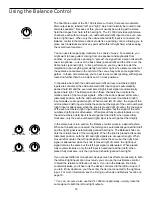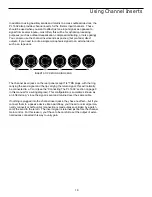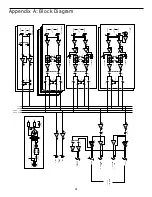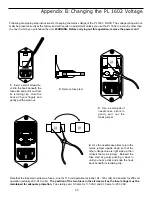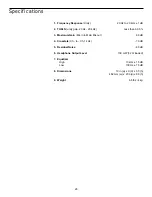
14
Grounding Techniques
Hum and buzz are the biggest enemies you face when interconnecting a large
number of different pieces of equipment to a central audio mixer. This is
because each piece of equipment may operate at a marginally different voltage
(this difference is called potential) and, when two devices at slightly different
potential are physically connected with audio cabling, the end result can be
nasty, extraneous noise (mind you, connecting two devices at very different
potential can result in a major electrical shock!).
However, there are several steps you can take to avoid grounding problems.
First, assuming you have an isolated electrical circuit that can handle the
electrical demands of your mixer and all connected audio equipment (these
needs will usually be modest), you should always plug your mixer and all
connected equipment into the same circuit. If possible, nothing else but this
equipment should be connected to that circuit. If you can’t do this, at least avoid
plugging your mixer and audio equipment into the same circuit that is already
powering things like heavy machinery, air conditioners, heaters, refrigerators,
washing machines, neon signs or fluorescent light fixtures. One particular culprit
that will almost certainly create problems is the standard light dimmer (the kind
that uses silicon controlled rectifiers). Where low-level lighting is desired, use
incandescent fixtures with autotransformer-type dimmers (sometimes called
Variacs) instead—these cost considerably more than the standard dimmer you’ll
find at your local hardware store, but are well worth the extra expense.
Three-prong plugs (such as the one used by the PL 1602) should always be
used as is; don’t use adapters to lift the ground (unless you’re using a “star
ground network”—see below). If you hear hum or buzz from a device that uses
a two-prong plug (or an external two-prong AC/DC adapter), you can try revers-
ing the plug in the socket. If that doesn’t work, you may need to physically
ground that device’s chassis by connecting a wire (called a strap) from it to a
grounded piece of metal such as rack ears. Some pieces of equipment have a
screw-type ground post to which the strap can be connected; if not, you can
attach some kind of metallic binding post to the case itself. If you are using rack-
mounted audio devices and are experiencing hum or buzz, there’s a simple test
to determine the source of the problem: while keeping all devices powered on
and connected with audio cabling, physically remove each device, one by one,
from the rack. If the hum disappears when a particular device is removed, you’ll
know that device is the culprit.
We also recommend that you use balanced audio cabling and connectors
wherever possible. The PL 1602 provides electronically balanced inputs for all
line channel inputs and for its Main outputs. The wiring diagram in the
“Connecting The PL 1602” section of this manual (page 9) shows how 1/4" TRS
(Tip/Ring/Sleeve) connectors should be wired for use with these inputs and
outputs.
In addition, you can minimize possible interference by planning your audio,
electrical, and computer cable runs so that they are as far apart from one
another as possible and so they don’t run parallel to one another. If they have to
cross, try to ensure that they do so at a 90° angle (that is, perpendicular to one
another). In particular, try to keep audio cabling away from external AC/DC
adapters.
Summary of Contents for PL1602
Page 1: ......

















